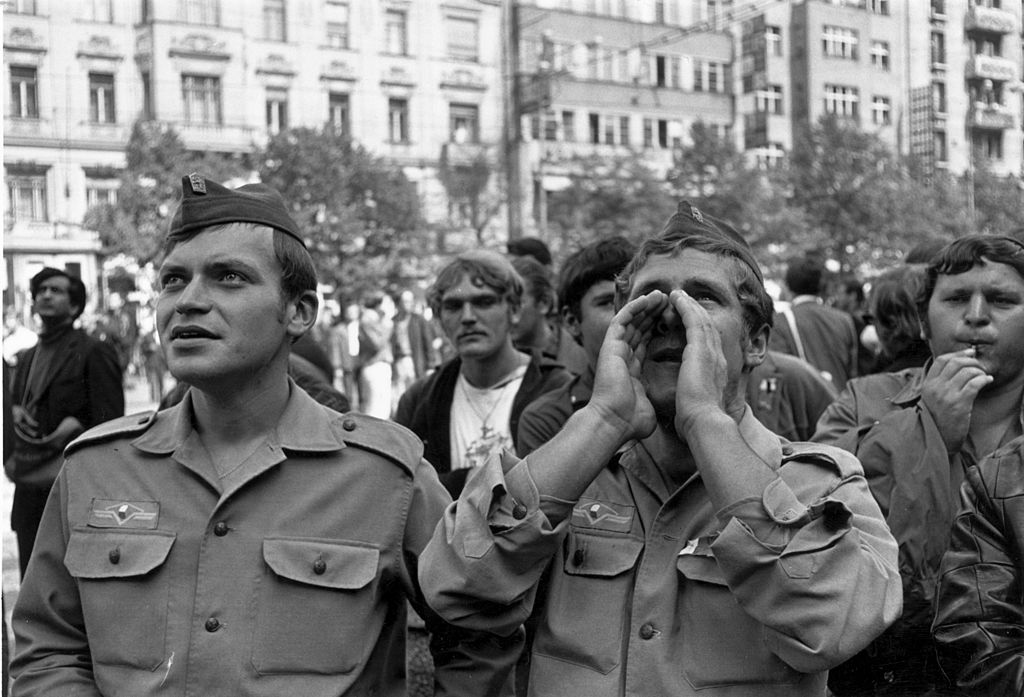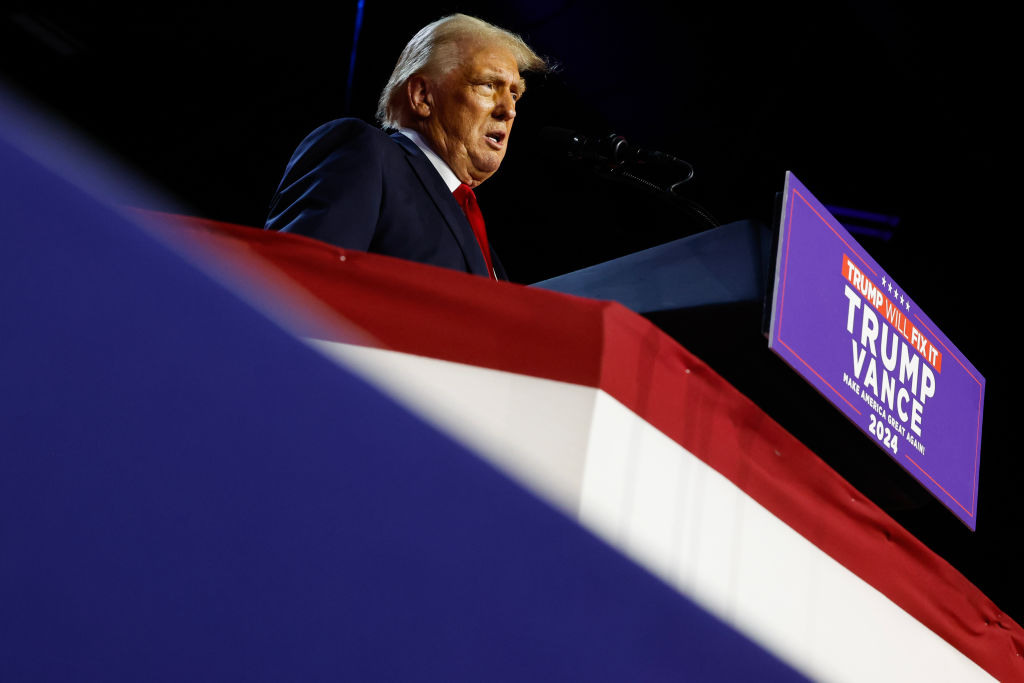As the war reached its 1000th day this week, any form of victory seems further away from Kyiv’s grasp than ever before. Militarily, Ukraine’s situation is dramatic; politically, after the US election, it is irrecoverable. Soon, the West – especially Europe – may have to face the final results of its Ukraine policy. We should not shy from discussing the worst case scenario, not least because the record of Western strategy over the past 30 years suggests that versions of the worst are rather likely. The full reality of where things could realistically end for Ukraine is almost too hideous to contemplate, but it is important to be clear on the risks so we avoid even greater policy mistakes as the endgame approaches.
Negative prospects
The greatest risk is that Ukraine becomes Europe’s insoluble, festering, forever-problem and a recurring source of conflict with a major military power; a war-torn land that never gets to recover, locked in a spiral of resentment, corruption and violence, drained of talent and living on the charity of its sponsors; and perhaps an inadvertent exporter of trouble, including vast refugee flows, among its neighbours. Some might find in this parallels with how Palestine is seen by many Arab states.
Horrific as it sounds, this is what is potentially at stake in this war against an implacable foe like Russia. A regime like Putin’s that was able to unleash such hell upon Ukraine in 2022, after all the tragic lessons of the 20th century (including for Russia itself), cannot be expected to let go of its prey and make any concessions in victory – if it achieves it – regardless of what the ceasefire or peace agreement eventually says.
President Zelensky took a huge gamble in March 2022 when he decided to end the incipient Istanbul peace talks with Russia, encouraged by “ironclad” promises of long-term Western support and by the upsurge in patriotic mobilisation at home and moral mobilisation in Ukraine’s favour abroad. After surviving Putin’s initial onslaught and saving Kyiv, suddenly “defeating Russia” appeared to many as not only possible, but feasible. The risk of eventually losing the war after years of heavy fighting and untold Ukrainian deaths – and ending up in the same situation as in March 2022 or worse – was perhaps difficult to judge clearly at that point in time.
The fact that Ukraine is now on a losing trajectory is a matter of evidence and accepted by almost all analysts. The Russians are pressing on Pokrovsk, making inroads into Kupyansk, and assaulting the Ukrainian salient in Kursk with North Korean help. Many of Ukraine’s units are undermanned and mobilisation efforts are not sufficient to replace losses; the country’s manpower problem is far more dangerous than that of equipment and munitions. Even the New York Times is publishing op-eds lamenting this “disastrous” and “unwinnable” war.
Most importantly, the latest Gallup survey finds that now a majority of Ukrainians (52 per cent) “would like to see their country negotiate an end to the war as soon as possible”. The popular will to fight has collapsed by over 25 per cent since last year when only 27 per cent of people were for a negotiated peace. And this data was collected in August and October, before some of Russia’s key advances on the front over the past month, and before Trump’s election.
The Trump factor
No one can predict Trump’s exact impact on the outcome of the war, but his return to the White House does narrow the range of potential futures. US military and financial aid for Ukraine is likely to be curtailed: Trump feels that even being in NATO is hardly justified financially on America’s part, let alone sending money to Kyiv. Besides, the military situation is aggravating rapidly and by the time he takes office at the end of January, it may well be the case that only a radical military escalation in US support could change the course of the war – which is unlikely to happen given Trump’s own repeated warnings and statements about the risks of nuclear war.
At the same time, Trump will open negotiations with Putin in which the priority will be a ceasefire, with everything else pertaining to an eventual peace treaty – territory, guarantees for Ukraine etc – being secondary, and not likely to bind the US in any meaningful way for the long term. This does not mean we should expect a rush to agree with Russian demands. On the contrary, given what we know of Trump’s doctrine in foreign policy, he will likely want to make a demonstration of force from the start, in order to strengthen his hand. Rumours that he had been briefed on, and agreed with, Biden’s decision to greenlight missiles use inside Russia fit this pattern.
His model for Ukraine could be the 1973 Paris Peace Accords that ended the Vietnam War and that won Henry Kissinger the Nobel Peace Prize – something that Trump might also aspire to. In that case, too, diplomacy was preceded by intense US bombing over Christmas 1972, to bring the North Vietnamese to the table. The fact that South Vietnam was left defenceless in the face of its northern enemy – which completely overran it two years later – was judged to be acceptable then, by Nixon, in order to extricate the US from a messy fight halfway around the world. There is no inherent reason the Ukraine situation wouldn’t be handled in a similar way today by Trump.
The European factor will not matter much in the Ukraine endgame: not because it shouldn’t, but because it can’t. The idea that Europe can “replace” the United States as the primary sponsor and military guarantor of Ukraine is completely misguided. The Europeans have neither the money nor the political will – including domestic support – to take on such a role. The big military powers – except Poland – are struggling to get to 2.5 per cent for defence, when a minimum of 3 should be in order, while recruitment remains a chronic problem. Furthermore, certain types of assistance that Ukraine needs – including Elon Musk’s Starlink – are only supplied by the US.
There are now some desperate proposals in Europe, both from experts and from political leaders like Donald Tusk, to create “coalitions of the willing” on defending Ukraine. There could hardly be anything more foolish: this would cut directly against NATO unity; would undermine Trump’s policy (and be seen as such); and would not work in practice, either in political terms (likely requiring parliamentary approvals in divided countries) or in military terms (it’s not clear what spare capacity there is to send to Ukraine in order to make a difference).
The brutal fact is that Europe has squandered the time that Ukraine bought it with the price of its brave soldiers’ lives, and has failed to rearm at scale – either to defend itself (which remains impossible to do without the US), or to be able to supply Ukraine with war materiel in abundance, and separately from the US. It is too late now to reach for desperate, escalatory solutions; such panicked, half-thought decisions can only lead to even more disasters.
In these conditions, negotiations – on American terms, as far as the allied side is concerned – are almost inevitable, unless the ultra-hawks have their way and push for escalating the conflict into a general war with Russia (and North Korea, its formal ally) before Trump takes office. If anything, European machinations to pre-determine Trump’s options on Ukraine could backfire if the incoming US administration starts perceiving these actions as hostile to itself – and they could turn into a self-fulfilling prophecy in terms of America’s re-evaluation of its role in NATO. Needless to say, that would be an unmitigated disaster for European security.
Avoiding the worst case
This brings us back to the worst-case scenario for Ukraine. In order to avoid it, Kyiv needs three things from a negotiated peace: a democratic, independent government; guaranteed security against renewed Russian aggression; and immediate large-scale reconstruction funds. All three are required for a viable state that can recover.
But democracy is likely to be severely tested by the peace process, if – as is now increasingly likely – Ukraine will be forced by events into major concessions. Zelensky’s recent comments that “the US cannot force us to ‘sit and listen’ at the negotiating table” and that “we are an independent country” may be correct in theory but not in practice. Ukraine is completely dependent on foreign (especially American) material support; it would collapse without it. Zelensky will have to sign the final treaty, if there is to be peace; but it might also be a death sentence for Ukrainian democracy if demobilised far-right militias interpret the document as a betrayal of their country.
The question of guarantees for Ukraine is likewise going to be extremely complicated. NATO membership is clearly not an option, politically. Effective bilateral guarantees – from the likes of Britain or Poland for example – are difficult to envisage in absence of clear mutual defence clauses, but these would of course carry the risk of dragging NATO into a future war. Furthermore, such mutual defence treaties would need parliamentary approval at home. A number of countries have already signed “defence agreements” with Ukraine, but these pertain to defence cooperation, such as in the industrial field, not to wartime military assistance.
Only two solutions can be envisaged in such circumstances, potentially working together. One is for Ukraine to rely only on its own armed forces, but reconstituted, reformed and rearmed to an exceptionally high level with Western help. However, in this worst-case scenario of a militarily-dominant Russia, Putin is unlikely to agree to any peace, in the first place, that does not involve limits on Ukrainian military power. There is also the issue of cost for maintaining this massive military establishment; and that of retaining and/or finding the personnel to fill its ranks. Some will want to stay on after the war; many will leave the forces.
The second and perhaps concomitant partial solution would be a strong peacekeeping mission patrolling a wide demilitarised zone, as suggested in these pages in September 2023. There would be multiple points of failure for this kind of plan as well, starting with the difficulties of finding states willing to volunteer troops for such a dangerous assignment. The Korean DMZ works because of US troops based in the South; but a de facto victorious Russia would not accept this in Ukraine.
Finally, finding money for Ukraine’s reconstruction – while the country will also have to start paying back its debts – is likely to be more difficult than assumed. US aid can be safely counted out while Trump is president. The burden will fall squarely on the EU, but the bloc can barely fund its existing budgetary commitments as it looks to issue more joint debt to cover things like increased defence spending, and as Europe’s economic decline accelerates. Meanwhile, private investors might be cautious to come in if the peace agreement appears precarious. But in a drastic peace deal there could be, ironically, an economic silver lining: the most devastated parts of Ukraine might revert to Russia and become its problem.
The extent to which Ukraine can secure its democracy, obtain real security guarantees, and fund its reconstruction will determine whether it can ever get over a potential de facto defeat in this war. If Ukraine comes into the negotiations from a position of weakness, as is the case on the current trajectory, and is forced by circumstances into a hard peace, the risk of perpetual post-war drift is very real – especially once the guns fall silent and the rest of the world moves on.
Unfortunately, Ukraine is not master over its own fate in practical terms, despite what it was perhaps been allowed or led to believe. Nor are the Europeans in a position to help it decisively as the walls close in. They missed their chance to get their act together and be ready for the potential double-blow of Russia gaining the upper hand on the battlefield, and an anti-war America First president returning to the White House.
As uncomfortable as this may be to some, the real arbiter of Europe’s future at this absolutely critical juncture is Donald Trump. His express interest is peace in Ukraine. European NATO countries’ vital interest, on the other hand, is to keep the US on-side and committed to Article 5 which is the only real safeguard for the Alliance’s borders against Russian aggression. Everything else may become secondary by force of circumstance, which may spell disaster for Ukraine.
Gabriel Elefteriu is deputy director at the Council on Geostrategy in London and a fellow at Yorktown Institute in Washington, D.C. All opinions in this article are strictly personal.






Will armed militias ever spring up in Europe again? As internal strife spreads across the continent and Ukraine falters, the Freikorps are a warning from history